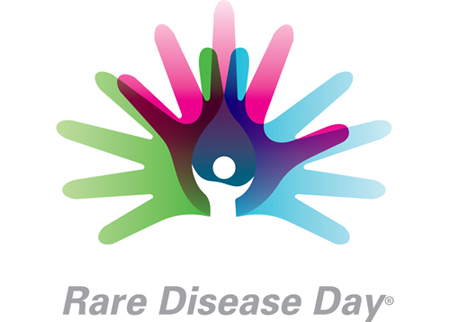
(Ecns.cn) – More than 30 rare disease organizations began celebrating the upcoming Rare Disease Day with residents in Beijing on Sunday, as part of efforts to raise awareness among decision-makers and the general public about the accurate diagnosis and treatment of rare health disorders.
As of today, there is no official definition of a "rare" disease, and sufferers from such maladies are referred to as "orphans" in the medical community because their conditions are often misdiagnosed and improperly treated.
In China, experts proposed two years ago that a rare disease should be defined as a condition that affects fewer than one in 500,000 persons or one in 10,000 newborns, but these parameters proved not to be widely acceptable, noted China Newsweek.
Yet without a national standard, sufferers of rare diseases must rely on medical insurance to cover a limited number of medications, while the rest must come out of pocket. They must also cope with discrimination from an uninformed society.
Unknown 'orphans'
Linlin is a sufferer of Lymphangioleiomyomatosis (LAM), a rare lung disease that results in the proliferation of disorderly smooth muscle growth throughout the lungs. Before finally receiving an accurate diagnosis in 2006, Linlin was forced to overcome many hardships, according to China Newsweek.
For a number of years, whenever she felt pressure in her chest and shortness of breath, Linlin would be told that she had a pneumothorax, or collapsed lung, and many doctors advised her to get surgery.
However, instead of recovering from the illness after meticulous treatment, Linlin's condition only worsened.
In 2006, Linlin fainted and was sent to Peking Union Medical College Hospital for emergency treatment. It was then that Dr. Xu Kaifeng, chief physician of the hospital's Department of Respiratory Medicine, diagnosed Linlin with LAM and told her that she needed a potent immunosuppressant drug called Rapamycin.
Though carrying serious side effects, Rapamycin eventually saved Linlin's life. Now, she leads a more normal life, and hopes that other sufferers of rare diseases will also be accurately diagnosed and take the right medications.
Linlin is a typical case of a rare disease "orphan," whose disorder is generally unknown to the public. When Linlin was diagnosed in 2006, the number of LAM cases in China was less than 100, according to China Newsweek.
Discrimination
Although she was saved from certain death, Linlin still has many difficulties to overcome in her daily life, since walking only 20 meters leaves her short of breath. Worse still, she is unwilling to reveal her infirmity.
While at work, Linlin often takes breaks on her way to the restroom. If she happens to come across her colleagues on the way, she will pretend to read text messages on her mobile phone to avoid being discovered.
Dr. Huang Yu, deputy director of the Department of Medical Genetics at the Peking University Health Science Center, noted that Linlin's behavior is a way to avoid discrimination, and that wider knowledge of rare diseases is needed to help the general public develop a proper attitude toward those who suffer from such disorders.
Apart from the lack of awareness of rare diseases, the "orphans" also suffer from the high cost of medications, since they usually have to bear the burden on their own.
Because Rapamycin is not on the list of medicines covered by the national medical insurance program, Linlin must pay about 3,500 yuan (US$555) every month out of her own pocket, a very heavy financial burden.
Reform needed
Work for the prevention and treatment of rare diseases began relatively late in China, and there is currently no healthcare policy related to such patients.
But even in other countries, few pharmaceutical factories and drug manufacturers are willing to put in money to develop medicines for rare diseases, as the target market is too small to recoup the costs.
To help the "orphans," the government must work towards rare disease legislation and set aside a budget for research and drug manufacturing for the diseases, said Li Dingguo, a physician at Xinhua Hospital under the School of Medicine at Shanghai Jiaotong University and a member of the National Committee of the CPPCC.
In the U.S., about 99 percent of rare disease patients have commercial insurance to cover their medical expenses; in Brazil, more medicines for rare diseases are added to the national medical insurance program every year; and in Italy, the government has set up a foundation to help sufferers of rare diseases.
Li revealed that Shanghai is planning to launch a pilot medical insurance program this year to cover a certain number of medications for rare diseases and help such patients with assistance from different organizations.
For the time being, voluntary organizations like the China-Dolls Center for Rare Disorders are the main providers of financial and medical support for rare disease patients.
In 2008, the Rare Disease Office of the China Charity Foundation was set up with a grant of 2 million yuan (US$317,200) from Genzyme, the U.S. pharmaceutical company that developed Cerezyme. Genzyme had cooperated with Project HOPE, an international healthcare organization founded in the U.S., in bringing Cerezyme to patients in 1999, according to China Daily.
Rare Disease Day is an annual awareness-raising event coordinated by EURORDIS at the international level and the National Alliances of Patient Organisations at the national level, which falls on February 29. Even though the campaign started as a European event, it has progressively become global, with the U.S. joining in 2009 and patient organisations in 56 other countries participating in 2011.

Copyright ©1999-2011 Chinanews.com. All rights reserved.
Reproduction in whole or in part without permission is prohibited.